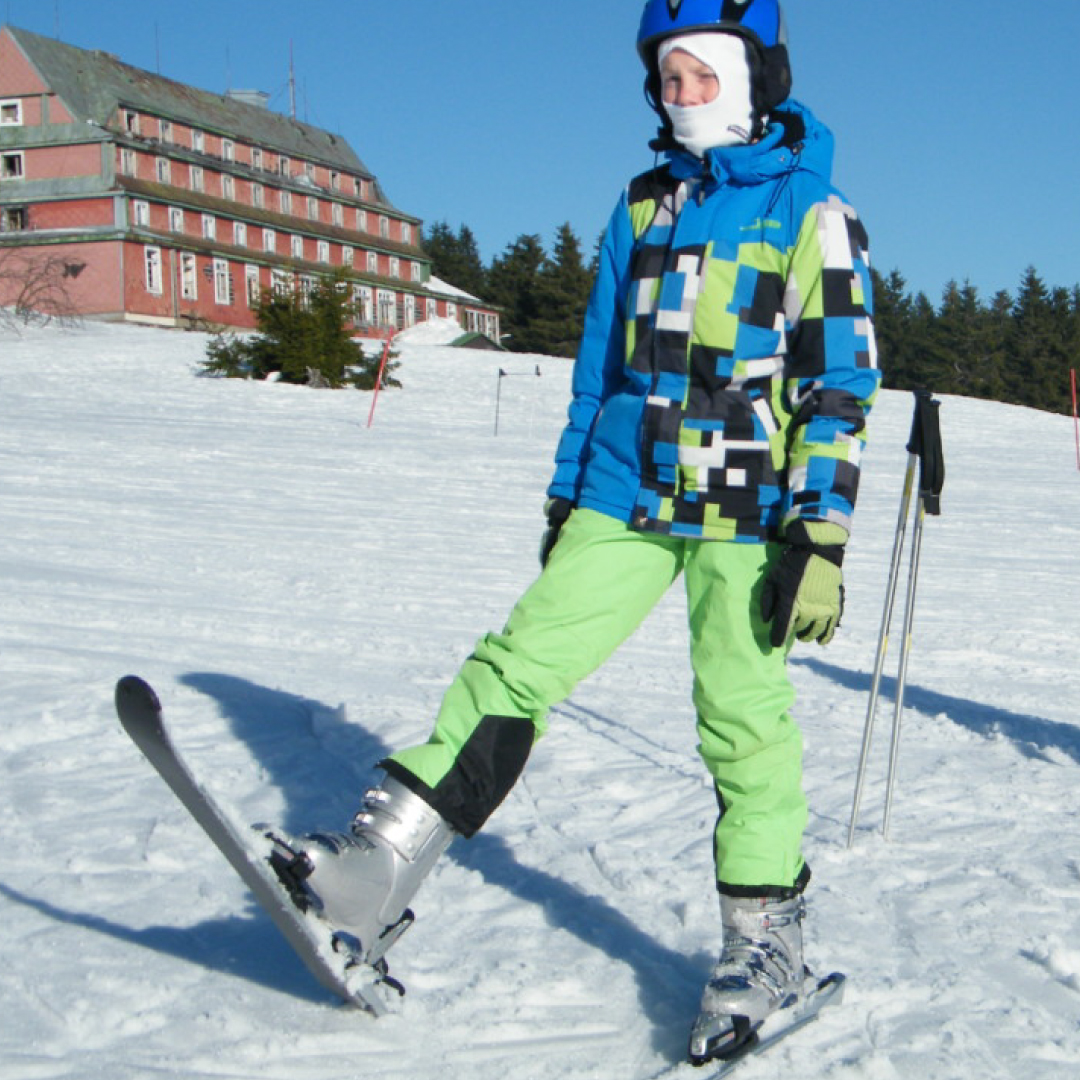Study on STAKI skis
by Doctor of Pedagogy, Jaroslav ŽÍDEK, PhD., FTVŠ UK, Department of Sports in Nature and Swimming
These skis are quite different at first glance. They are only 1m long, so they have the characteristics of short skis and are easy to use. But their main, characteristic feature is a 20cm aluminium tail-end that slides diagonally behind the heel binding. Along the sides and underneath there are three vertical slats, which serve to increase skier stability. The side helps the skier to better keep track of their ride along the edge, and with the centre lamella, the rider can maintain their balance when hitting a bump to prevent themselves from flinging backwards. In this moment, the metal ending does not slip like a regular pair of skis, but instead holds the skier in place and return them into the proper downhill position.
While on a groomed ski slope surface, the skis have no problems whatsoever, but not even uneven terrain can cause any problems because STAKI skis provide a unique support mechanism. Representatives of the vendor company predict that most people want to feel safe and secure when skiing on the slopes. Thanks to the tail-end design, you can also quickly change the diameter of your curve, which is definitely an advantage when another skier needs to traverse past you along the route. Slightly pushing into the end during your ride will engage one of the side slats, which will allow you to adjust the diameter of the curve more easily. The tail-end is so steady while in a backwards motion that you can just cruise along on the original heels while on steep terrain.
STAKI skis are also special for their versatility. This versatility lies in the fact that these metrical skis can be used by both children and adults, which is made possible by the length-adjustable binding that takes just a minute of preparation for the next skier to use.
All children can take a ski training course with them, and parents don’t have to lend out their skis to everyone separately. For the next year, the child only moves the tip of the binding as their foot grows, but the STAKI skis remain the same. STAKI skis are also versatile in terms of skiing style and slope angle. It can be enjoyed not only by complete beginners, but also by very experienced skiers. Let’s not forget that the short ski model is generally more gentle on your lower limbs, so even those who have joint problems can enjoy them, including those with knee problems. Skiing in more difficult snow terrain is also made much easier. Furthermore, they are easily transportable in the trunk of your car, so you can save your money and refrain from purchasing a roof rack. With skis that are obedient to your every command, anyone can manage to ski and no terrain will be an obstacle for them. The metal tail-end enhances your stability, while at the same time ensures your safety, allowing you to experience a truly relaxed, lightweight skiing adventure.
We tested the skis out at a national skiing seminar in Stubai, Austria. We consider the knowledge that we acquired to be key not only for teaching but also for sports education. The skis are very responsive in correcting your stance (proper forward lean). If the ski is loaded on the lamella end, the front of the ski does not lead into a curve, nor does it start to vibrate on the horizontal plane. In other words, the ski immediately checks the correct forward load, which is the basis for a perfect curve. For a beginner, these skis will help you achieve the right stance from the first curves (correct movement habits), which is important for making significant progress. For top-level riders who also sometimes have a problem with this active front-to-back posture , these skis can serve as a way to check for the correct exertion of your lower limbs for downhill disciplines.

